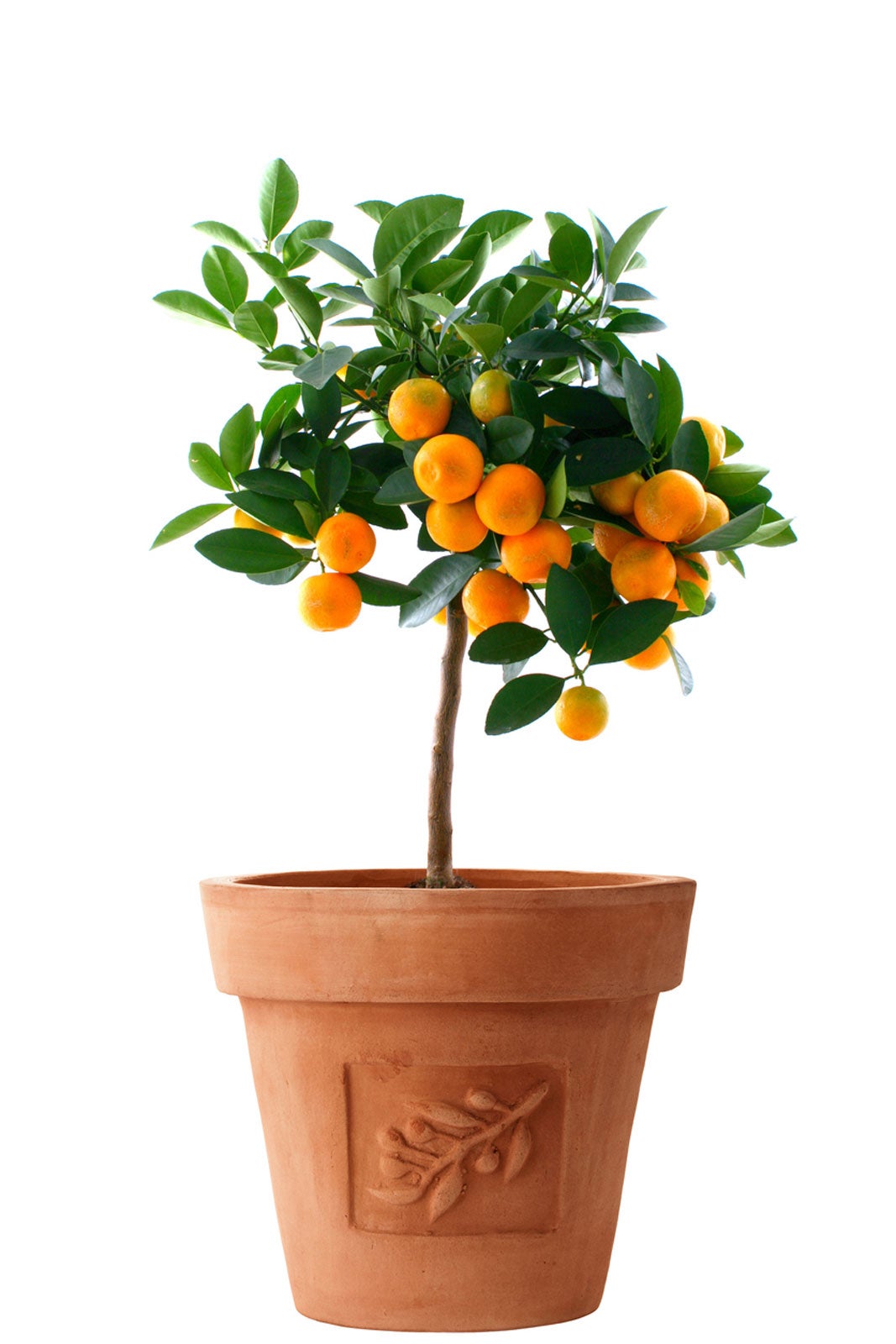
Love the aroma of orange blossoms and the delicious fruit, but perhaps your climate is less than desirable for an outdoor orange tree grove? Don't despair; the solution may just be growing orange trees in containers. Can you grow oranges in a pot? Read on to find out.
Can You Grow Oranges in a Pot?
Yes, indeed. Growing orange trees in containers is the easiest and surest method to protect them from possible cold damage. The key is selecting the best orange trees suited for pots followed by appropriate fertilization, watering, and maintenance of size through pruning.
Best Orange Trees for Pots
Almost any citrus can be container grown, but due to their large size, they may suffer in a pot. The best orange trees for container gardening are the dwarf cultivars:
Satsumas are a small tree that can be dwarfed even more when potted. All these small trees must be protected when temperatures drop to 25 degrees F. (-4 C.) or lower. The tree can be moved to a sheltered area, indoors, or covered with a double layer composed of a blanket and then plastic. If temps return to normal the next day, be sure to uncover the orange. An established citrus can tolerate low temps and recover more quickly.
Orange Tree Container Gardening
To get your containerized orange tree off on the right footing, you need the correct potting soil mix and the correct size pot. While you can place the tree in a 5 gallon (19 L.) pot, bigger is better. A large container like a whiskey barrel or 20 gallon (76 L.) pot is ideal. Make sure it has drainage holes or drill some into it.
The addition of some heavy-duty coaster or wheels is a good idea as well. For potting medium, there are numerous thoughts, but the prevailing opinion is to select one that is well-draining. Commercial potting mixes with peat moss, perlite, vermiculite, and compost are suitable as long as the soil is light enough to drain well. If it is too heavy, amend with hardwood bark, cedar, or redwood shavings, perlite, or coco fiber.
Avoid buying any potting soil with chemical wetting agents which will make the soil too wet and potentially rot the roots. First, add a layer of gravel or rock to the bottom of the pot to aid in drainage, then add some of the soil mix to rest the roots on. Situate the tree on top and fill in around it, keeping the tree vertical and straight. Tamp the soil down around the roots to remove air pockets.
Sign up for the Gardening Know How newsletter today and receive a free copy of our e-book "How to Grow Delicious Tomatoes".
Orange Tree Container Care
Fertilize your new orange tree using a Vitamin B-1 rooting tonic once it has been potted. Thereafter, apply a slow-release fertilizer to the soil surface yearly in the spring, which will prevent any burning of the root system. Winterize your tree by ending fertilization after July. Fertilization after July promotes late, tender shoots that are susceptible to cold damage.
Choose a site for the orange that is sheltered from northern winds and is in full sun. Overwatering is the number one problem for container-grown citrus. Water the orange tree as needed, allowing the upper inch of the soil to dry before watering again. Plastic, metal, and ceramic pots stay wet longer than wood or clay. Reduce watering during the winter.
Restraining the size of the orange by pruning will ensure a balanced shape. Prune back leggy branches to encourage side branching. Every three to four years the tree will likely outgrow its container and may be heralded by leaf shed, browning, and twig dieback. Either re-pot the tree to a larger container or remove it and trim the roots, returning it to the original pot with fresh potting soil.
If cutting back the roots, remove about one-quarter of the roots, 2 to 3 inches (7-8 cm.), and prune out at least one-third of the foliage at the same time. Thin the citrus every spring to reduce the number of fruit, which is usually overkill for the size of the tree. This will ensure better fruit size, prevent alternate bearing, and better overall tree health.
Over fruiting can stunt the growth of young trees as well as leave it susceptible to pest damage and freeze injury. A 5 gallon (19 L.) tree should only be allowed to set four to six fruit in the first year.

Amy Grant has been gardening for 30 years and writing for 15. A professional chef and caterer, Amy's area of expertise is culinary gardening.
